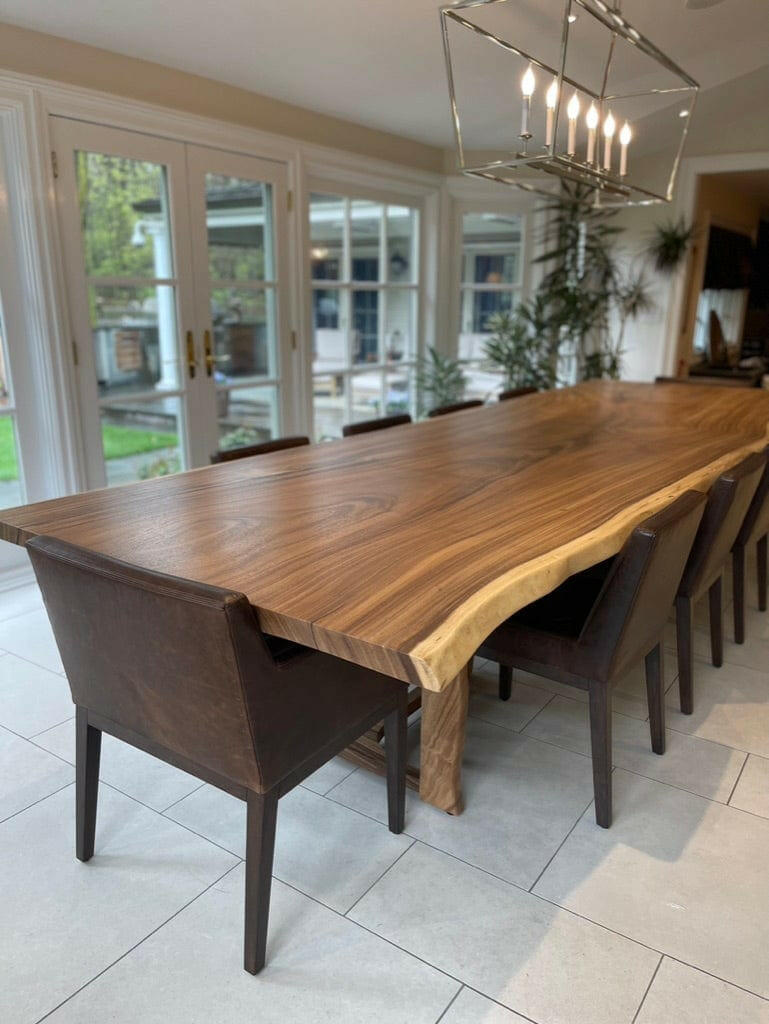A Comprehensive Consider Dining Table Leg Styles: Locating the Perfect Match
Selecting the best dining table leg style is critical for both visual charm and useful functionality. Traditional 4 legs use ageless elegance and security, while the pedestal base provides raised legroom and a modern-day look. For those with bigger tables, trestle legs guarantee sturdy assistance, whereas barrette legs introduce a mid-century modern-day vibe with their minimal style. The x-shaped legs blend contemporary design with improved security. Each of these choices brings unique advantages, making the choice extra than simply a matter of choice. Explore better to discover which design perfectly complements your eating space and way of life.
Standard 4 Legs
Among the various types of dining table leg styles, the conventional four-leg design remains a timeless selection for many households. Four legs give well balanced assistance, making sure the table stays steady and capable of bearing substantial weight (dining room table legs).
From a visual point of view, the standard four-leg design can be easily adapted to numerous indoor styles. Whether crafted from timber, steel, or a combination of products, these legs can be delicately sculpted, sleek and minimalistic, or anything in between. Their versatility permits them to match both rustic and contemporary setups flawlessly.
In addition, the straightforward structure of the four-leg design promotes convenience of movement and positioning within a space. Unlike even more complicated bases, this style decreases blockages, supplying sufficient legroom for restaurants. In summary, the traditional four-leg table leg style weds withstanding elegance with functional functionality, making it a sharp choice for those looking for both type and function in their eating furniture.
Stand Base
Usually celebrated for its stylish and space-efficient layout, the stand base is a prominent choice to the traditional four-leg configuration in dining table leg styles. Without edge legs, restaurants are afforded greater flexibility of activity, making it a perfect option for round and oblong tables that promote even more intimate and inclusive events.
In addition, the pedestal base's main support can manage significant weight, allowing for making use of heavier tabletops, such as marble or thick wood. This toughness coupled with its aesthetic flexibility makes the pedestal base a popular option in both traditional and contemporary interior setups. It can flawlessly integrate with various style motifs, from timeless sophistication to minimalist modernity. The central column itself uses a canvas for elaborate styles and creative expressions, adding an aspect of visual rate of interest below the table. In recap, the stand base integrates functionality snappy, making it a refined and functional choice for varied dining settings.
Trestle Legs
Trestle legs supply a robust and ageless structure for dining tables, characterized by their horizontal cross-bracing and tough support light beams. Originating from medieval times, this design has actually developed yet preserved its important framework, making it a seasonal favorite in both standard and modern setups. The central trestle beam, commonly sustained by 2 or even more click vertical messages, supplies exceptional stability, permitting larger table sizes without the demand for added legs.
A significant advantage of trestle leg tables is the enough legroom they offer. Unlike tables with four corner legs, the absence of obstructions at the table's sides gives unblocked area for chairs and diners, improving comfort and access. This makes trestle tables perfect for fitting bigger events, whether in a dining-room or a reception hall.
The aesthetic versatility of trestle legs is notable. Available in a selection of materials such as wood, metal, and composite, they can be this post ended up to match a vast range of indoor styles. From rustic farmhouse to sleek contemporary styles, trestle legs can be tailored to fit individual preferences. Their enduring appeal and practical benefits make trestle legs an engaging choice for those seeking both design and functionality in their table.
Barrette Legs

The allure of barrette legs hinges on their simpleness and convenience - dining room table legs. Readily available in a series of materials, consisting of steel and brass, they can be completed in countless colors to complement various indoor styles. Whether coupled with a rustic wood tabletop or a contemporary glass surface, hairpin legs easily blend performance with a touch of classic beauty
Sturdiness is another noteworthy function of barrette legs. Regardless of their delicate appearance, these legs are engineered to bear significant weight, guaranteeing the table stays secure and safe and secure. Additionally, they are fairly simple to set up, making them a popular option for do it yourself lovers and specialist furnishings manufacturers alike.
X-Shaped Legs

Constructed from products such as steel, timber, or a combination of both, X-shaped legs can be customized to match various layout preferences. Steel legs commonly lend a smooth and commercial feeling, suitable for loft-style apartments and contemporary eating rooms. On the other hand, wood X-shaped legs supply a warmer, more rustic allure, suitable for farmhouse or eclectic insides. The convenience in materials enables home owners to customize their eating tables to better fit their general style system.
Additionally, the design behind X-shaped legs makes certain also weight circulation, minimizing the risk of wobbling check here and boosting resilience. This makes them especially fit for bigger dining tables that need extra support. Essentially, X-shaped legs blend useful engineering with contemporary aesthetics, making them a timeless choice for diverse dining environments.
Conclusion
A detailed understanding of dining table leg designs exposes the unique characteristics and advantages of each style. Trestle legs ensure durable support for bigger tables, and hairpin legs present a mid-century contemporary aesthetic.